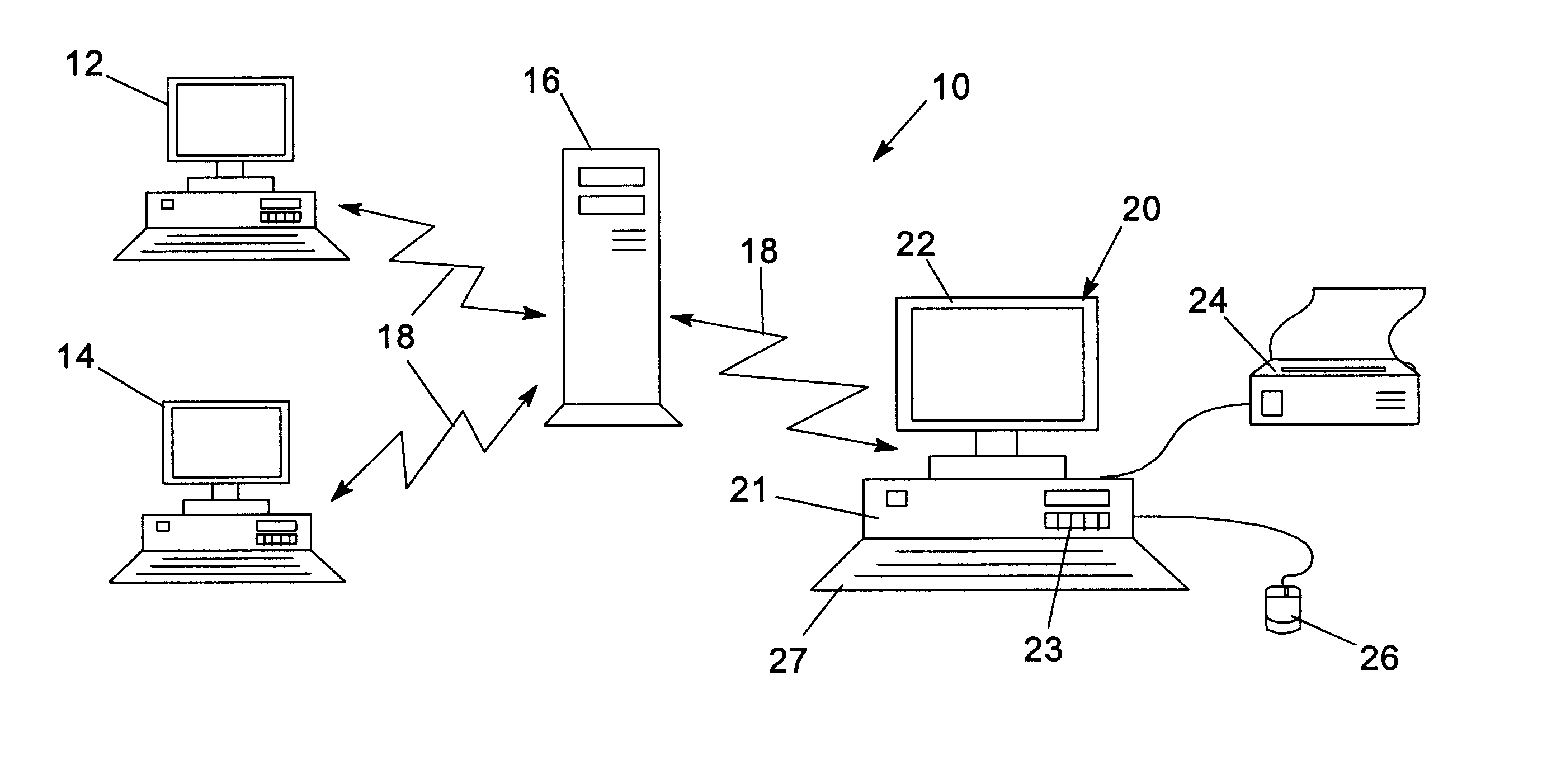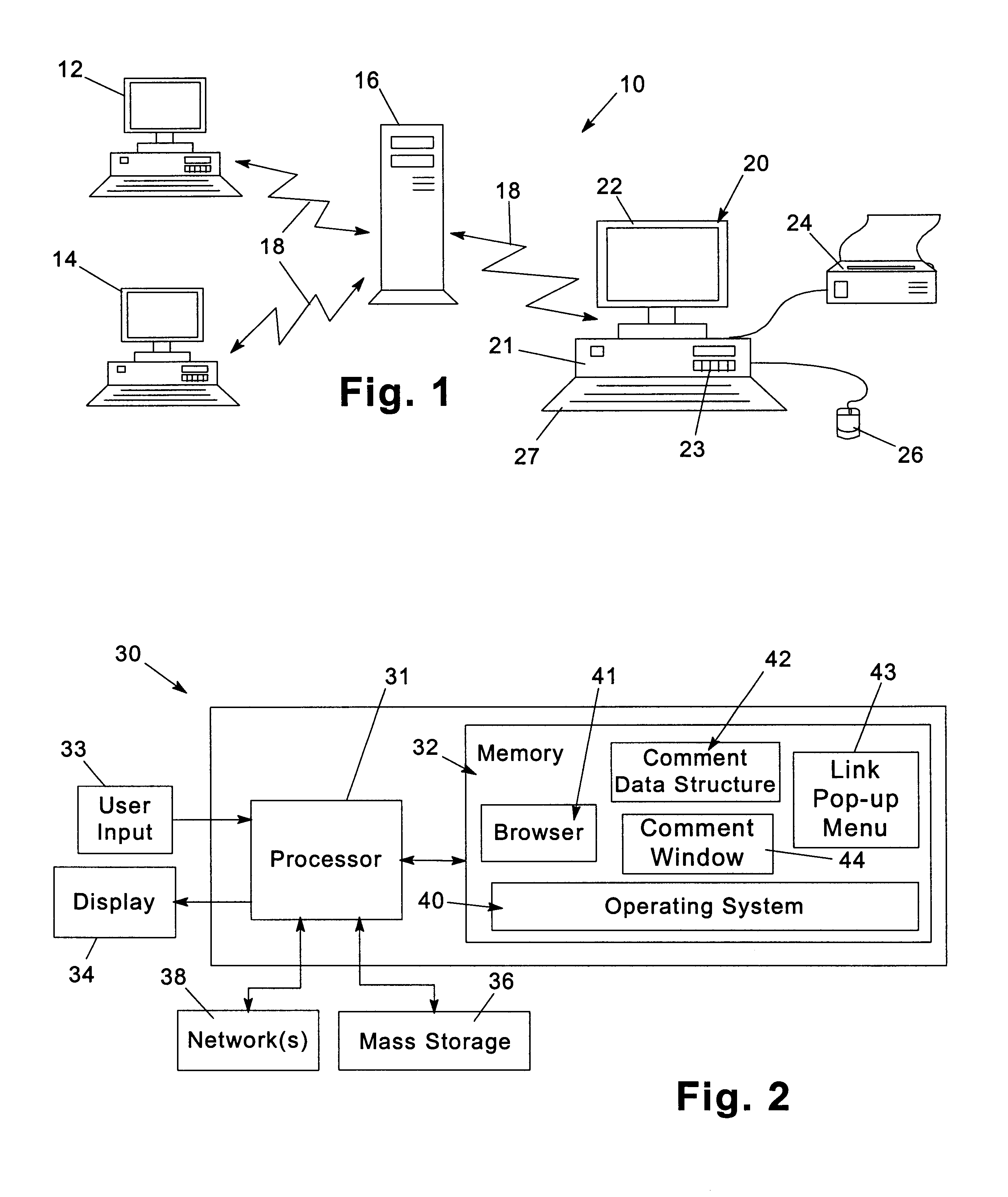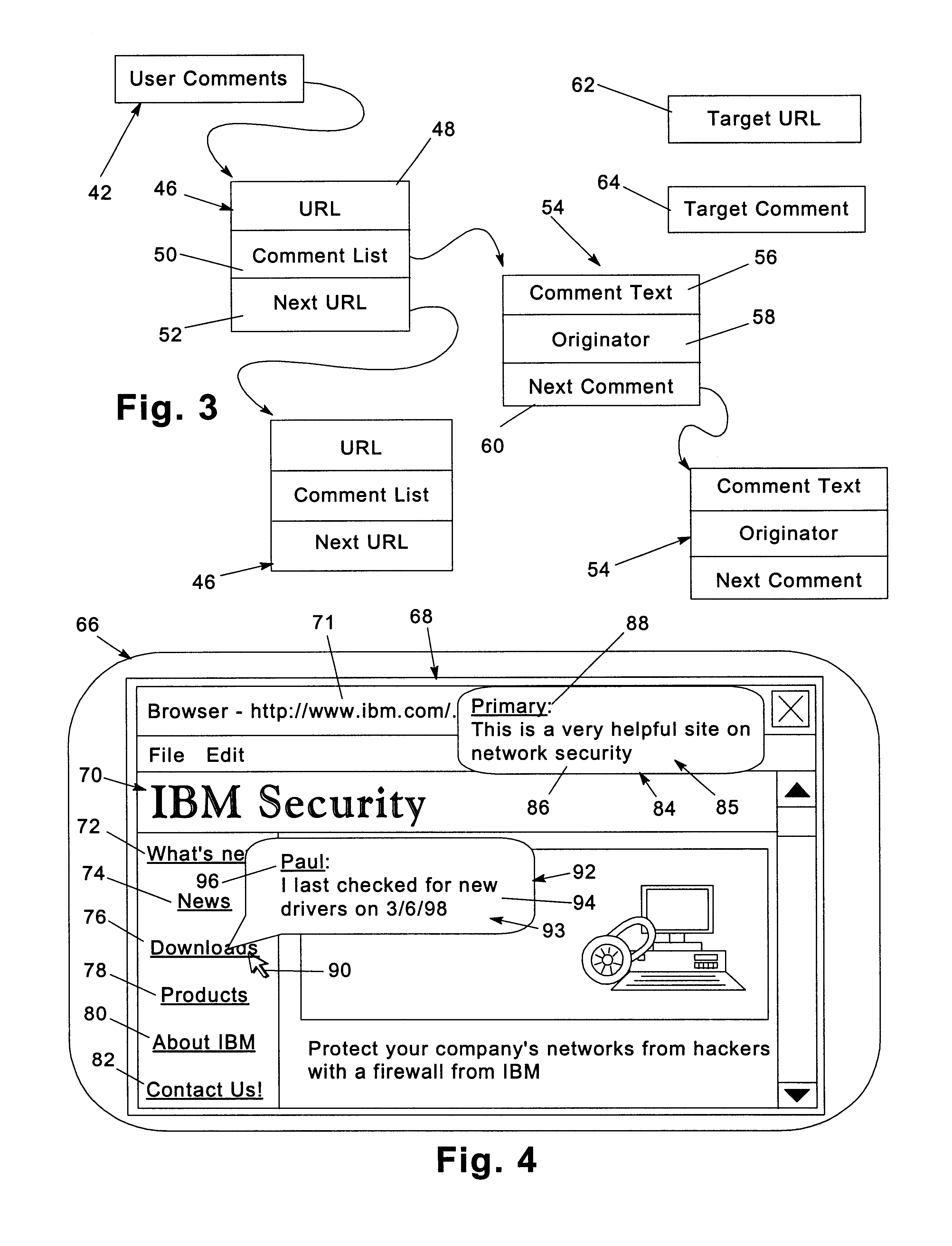Apparatus, program product and method of annotating a hypertext document with comments
a hypertext document and comment technology, applied in the field of computers and computer software, can solve the problems of increasing the amount of useless information about the topic, affecting the success of “separating wheat from chaff” and finding useful information on the internet, and affecting the user's ability to find useful information. , to achieve the effect of saving tim
- Summary
- Abstract
- Description
- Claims
- Application Information
AI Technical Summary
Benefits of technology
Problems solved by technology
Method used
Image
Examples
Embodiment Construction
Hardware and Software Environment Turning to the Drawings, wherein like numbers denote like parts throughout the several views, FIG. 1 illustrates a computer system 10 consistent with the invention. Computer system 10 is illustrated as a networked computer system including one or more client computers 12, 14 and 20 (e.g., desktop or PC-based computers, workstations, etc.) coupled to server 16 (e.g., a PC-based server, a minicomputer, a midrange computer, a mainframe computer, etc.) through a network 18. Network 18 may represent practically any type of networked interconnection, including but not limited to local-area, wide-area, wireless, and public networks (e.g., the Internet). Moreover, any number of computers and other devices may be networked through network 18, e.g., multiple servers.
Client computer 20, which may be similar to computers 12, 14, may include a central processing unit (CPU) 21; a number of peripheral components such as a computer display 22; a storage device 23; ...
PUM
 Login to View More
Login to View More Abstract
Description
Claims
Application Information
 Login to View More
Login to View More - Generate Ideas
- Intellectual Property
- Life Sciences
- Materials
- Tech Scout
- Unparalleled Data Quality
- Higher Quality Content
- 60% Fewer Hallucinations
Browse by: Latest US Patents, China's latest patents, Technical Efficacy Thesaurus, Application Domain, Technology Topic, Popular Technical Reports.
© 2025 PatSnap. All rights reserved.Legal|Privacy policy|Modern Slavery Act Transparency Statement|Sitemap|About US| Contact US: help@patsnap.com



